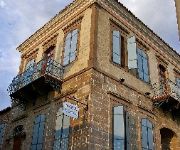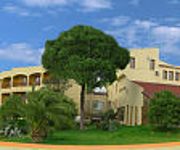Facts and Data
Webpages:
Official Unesco Page
Basis Data:
Unesco World heritage since: 2014
Size of heritage: 333 ha
- Buffer zone: 477 ha
Coordinates:
Longitude: 27,180°
Latitude: 39,126°
Summary
This site rises high above the Bakirçay Plain in Turkey’s Aegean region. The acropolis of Pergamon was the capital of the Hellenistic Attalid dynasty, a major centre of learning in the ancient world. Monumental temples, theatres, stoa or porticoes, gymnasium, altar and library were set into the sloping terrain surrounded by an extensive city wall. The rock-cut Kybele Sanctuary lies to the north-west on another hill visually linked to the acropolis. Later the city became capital of the Roman province of Asia known for its Asclepieion healing centre. The acropolis crowns a landscape containing burial mounds and remains of the Roman, Byzantine and Ottoman empires in and around the modern town of Bergama on the lower slopes.
Location on Map
Show bigger map on Openstreetmap
Introduction
The UNESCO World Heritage site of Pergamon and its Multi-Layered Cultural Landscape is located in Turkey, specifically at coordinates N39 7 33 E27 10 48. This site holds immense historical and cultural significance, as it was once the capital of the Kingdom of Pergamon and played a crucial role in the ancient world. Today, it stands as a testament to the rich heritage of the region.History
Pergamon, also known as Pergamum, was founded in the 3rd century BC and flourished under the Attalid dynasty. It became a prominent center of Hellenistic civilization and was renowned for its advancements in art, science, and medicine. The city reached its zenith during the reign of King Eumenes II (197-159 BC), who transformed Pergamon into a major cultural and political hub. One of the most remarkable features of Pergamon was its Great Altar, dedicated to Zeus. This monumental structure, adorned with intricate sculptures, was considered one of the Seven Wonders of the Ancient World. The city was also home to the Pergamon Library, which housed over 200,000 scrolls and rivaled the Library of Alexandria in its intellectual significance. In 133 BC, Pergamon fell under Roman rule and continued to thrive as an important administrative and cultural center. However, with the decline of the Roman Empire, the city gradually lost its prominence and was eventually abandoned in the 14th century AD.Current State
Today, the archaeological site of Pergamon stands as a captivating reminder of its glorious past. The remains of the ancient city are spread across a vast area, showcasing the multi-layered cultural landscape that has evolved over centuries. The most iconic structure at the site is the Pergamon Acropolis, which includes the ruins of the Great Altar, the Temple of Trajan, and the Library. The Great Altar, although now reconstructed in Berlin's Pergamon Museum, still leaves a lasting impression with its grandeur and intricate reliefs. The Temple of Trajan, dedicated to the Roman Emperor Trajan, stands as a testament to the city's Roman influence. Other notable structures include the Theater, which could accommodate up to 10,000 spectators, and the Gymnasium, a center for physical and intellectual pursuits. The Asclepion, a healing center dedicated to the god Asclepius, showcases the advanced medical practices of the time. The cultural landscape surrounding the archaeological site is equally captivating. The terraced gardens, known as the Pergamon Gardens, offer breathtaking views of the surrounding valleys and the modern town of Bergama. The landscape also includes the remains of ancient roads, fortifications, and residential areas, providing insights into the daily life of the city's inhabitants. Efforts have been made to preserve and protect the site, including the establishment of the Pergamon Museum in Berlin, which houses many of the artifacts excavated from the site. The Turkish government has also implemented conservation measures to ensure the long-term preservation of this invaluable heritage site. In conclusion, the UNESCO World Heritage site of Pergamon and its Multi-Layered Cultural Landscape in Turkey is a testament to the rich history and cultural significance of the region. With its ancient ruins, including the Great Altar and the Pergamon Acropolis, and its stunning terraced gardens, this site continues to captivate visitors and provide valuable insights into the ancient world.Hotels and places to stay
Hera Hotel
Yonca Lodge
Akropolis Guest House
Berksoy
ADO BEACH HOTEL
Anil Hotel
Ayvazali Hotel
Videos from the area
Videos provided by Youtube are under the copyright of their owners.













